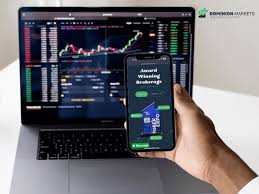
Learn Forex Trading Step by Step
If you’re interested in diving into the exciting world of forex trading, you’re in the right place. This comprehensive guide will offer you insights into how to start trading forex step by step. Whether you’re a complete beginner or looking to sharpen your skills, we’ll cover everything you need to know. Don’t forget to check out the learn forex trading step by step Best Vietnamese Brokers to find the right trading partner.
Understanding Forex Trading
Forex trading, or foreign exchange trading, involves buying and selling currency pairs to make a profit. The forex market is the largest and most liquid financial market in the world, with a daily trading volume exceeding $6 trillion. Because of its high liquidity and potential for profit, many traders are drawn to this vibrant marketplace.
Step 1: Learning the Basics
Before you jump into trading, it’s essential to understand some basic concepts. Here are a few key terms you should familiarize yourself with:
- Currency Pair: Currencies are traded in pairs (e.g., EUR/USD, GBP/JPY). The first currency is the base currency, and the second is the quote currency.
- Pips: A pip is the smallest price move that a given exchange rate can make based on market convention.
- Leverage: Leverage allows you to control a larger position with a smaller amount of money, but it also increases the potential for significant losses.
- Spread: The difference between the buying price (ask) and selling price (bid) of a currency pair.
Step 2: Choosing a Broker
Your choice of broker can significantly impact your trading success. Here are some factors to consider when selecting a broker:
- Regulation: Ensure your broker is regulated by a recognized authority to protect your funds.
- Trading Platform: Look for a user-friendly trading platform that offers comprehensive tools for market analysis.
- Fees and Spreads: Compare the commission structures and spreads among different brokers to ensure you’re getting a fair deal.
Step 3: Developing a Trading Strategy
A well-thought-out trading strategy is crucial for consistent success in forex trading. Here are some common types of trading strategies:

- Day Trading: Involves making multiple trades within a day, closing positions before the market closes.
- Swing Trading: Focuses on taking advantage of short- to medium-term price movements over several days or weeks.
- Scalping: Involves making numerous small trades to profit from minor price fluctuations.
Your strategy should take into account your risk tolerance, trading goals, and the time you can dedicate to trading. Finally, it’s important to stick to your strategy and avoid emotional decision-making.
Step 4: Practicing with a Demo Account
Before investing real money, practice your trading strategy on a demo account. Most brokers offer demo accounts that allow you to trade with virtual money while using real market data. This experience can help you familiarize yourself with the trading platform and test your strategies without risking any capital.
Step 5: Risk Management
Risk management is a crucial aspect of successful trading. Here are some tips to manage your risk effectively:
- Set Stop-Loss Orders: These orders automatically close your position at a specified loss level to limit your risks.
- Never Invest More Than You Can Afford to Lose: Don’t risk your entire trading capital on a single trade.
- Use Proper Position Sizing: Determine the appropriate amount to trade based on your account size and risk tolerance.
Step 6: Monitoring the Markets
Staying informed about economic news and events that can impact currency prices is vital. Major announcements, such as interest rate changes and geopolitical developments, can create significant volatility. Following market news and analysis can help you make informed trading decisions.
Step 7: Continuous Learning and Adaptation
The forex market is constantly evolving, and as a trader, you must adapt to these changes. Regularly review your trading performance and learn from both your successes and failures. Consider participating in trading communities, attending webinars, and reading books or articles on forex trading to expand your knowledge.
Conclusion
Learning forex trading is a journey that requires time, practice, and discipline. By following the steps outlined in this guide, you can build a strong foundation to support your trading endeavors. Remember that success in forex trading does not come overnight; it requires dedication and continuous learning. Start with a demo account, develop your strategy, and focus on risk management to position yourself for success in the dynamic forex market.
